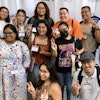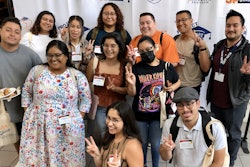Neither Enemies Nor Friends
New book explores relationships among Latinos, Blacks and Afro-Latinos
By Dina M. Horwedel
Neither Enemies Nor Friends
Latinos, Blacks, Afro-Latinos
Edited by Anani Dzidzienyo and Suzanne Oboler
Palgrave Macmillan, April 2005
336 pp., 1-4039-6567-6: $79.95 hardcover;
1-4039-6568-4: $24.95 paperback
In Neither Enemies Nor Friends: Latinos, Blacks, Afro-Latinos, the 15 contributing authors explore relationships between Blacks, Latinos and Afro-Latinos, and point out both the striking similarities and differences in the racial politics of the Americas — North, Central and South — and the Caribbean.
Those ethnic groups have been a hot topic in news reports since the 2000 U.S. Census revealed that Latinos had become the largest minority in the United States. But the book’s editors, Drs. Anani Dzidzienyo and Suzanne Oboler, say the media and the government are missing the point when they focus on numbers rather than relationships.
“Our objective was to show [that] we need to stop demonizing or idealizing parts of the Americas,” says Dzidzienyo, an associate professor of Africana studies and Portuguese and Brazilian studies
at Brown University. “By looking specifically at the history and practices of each country, as well as what happens when immigrants migrate from South to North, we see that it is almost impossible to separate race and class.”
“In the U.S., there is the myth of social mobility,” says Oboler, an associate professor of Latin American and Latino studies at the University of Illinois at Chicago, and the founding editor of the academic journal, Latino Studies. “There is so much fluidity, it is impossible to talk about class here, but race is an issue. [Hurricane] Katrina is an example of this. One reason we can focus on class so totally in Latin America is there is more of a caste system entrenched there and much less social mobility.”















